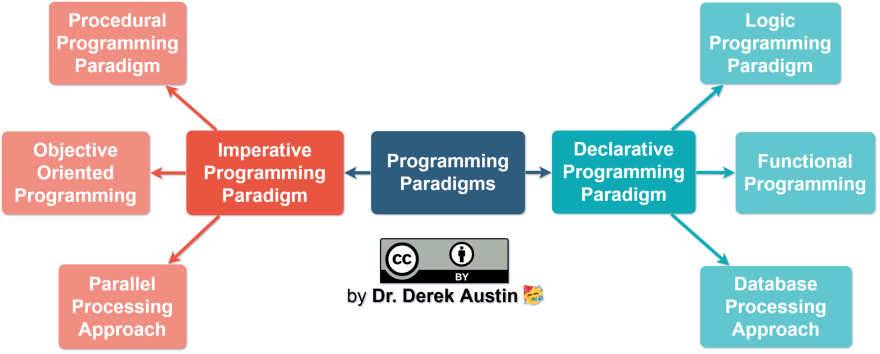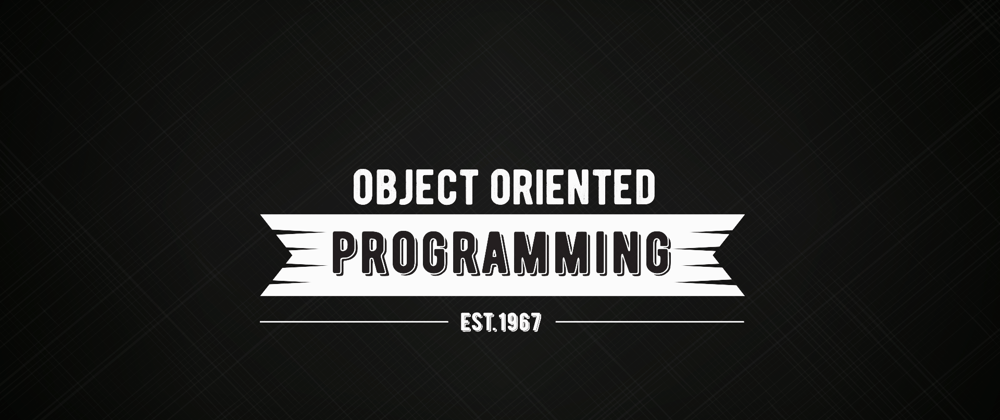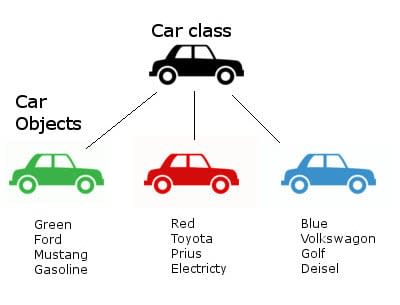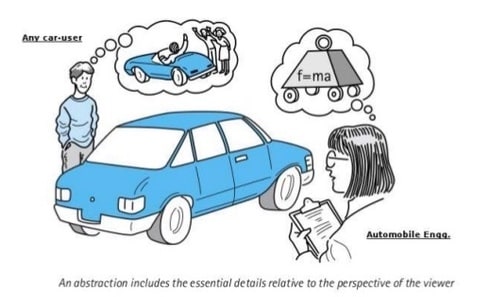Most of you might have heard the term Object-Oriented Programming while trying to learn a programming language. So, what exactly is this thing? Is it of any importance? Do we even need Object Oriented programming? Let's take a look into this.
Various Programming Paradigms
Paradigm basically refers to a way of doing things. A programming paradigm defines the methodology of designing and implementing programs using the key features and other building blocks (such as key-words, etc.) of a programming language. So, a programming paradigm would give you an idea about the logic of a program i.e. how problems are generally analyzed and solved in a particular programming language.

So, why did I talk about programming paradigms because this is where the concept and idea of Object-Oriented programming begins. Object-Oriented Programming (commonly known as OOP) or Procedural Oriented Programming(commonly known as POP) are nothing but different paradigms. So, let's take a look into what these two things namely OOP and POP actually mean.
Procedural Programming
Procedural Programming is a type of programming paradigm that lays more emphasis on procedure rather than on data. Procedural programming is basically used in programming languages such as c, Fortran, Pascal, etc.
Some advantages of Procedural programming paradigms are -
- It is highly structured
- It makes it easy to keep a track of program flow
- It is quite simple and easy to implement
The procedural programming paradigm separates the functions and data manipulated by them. Now, this leads to many problems when it comes to extending software or maintaining software. This is explained as follows -
- Procedural programming is susceptible to design changes
For example, take a look at this code snippet -
struct employer {
int empid;
char name[100];
char post;
}
Now the members of the structure can be manipulated within the program as -
void reademployee(employer e1){
cout<<"Enter id";
cin>>e1.empid;
cout<<"Enter Name";
gets(e1.name);
cout<<"Enter post";
cin>>e1.post;
}
Now if due to some reasons the structure employee needs to be changed and a new member employee number needs to be added -
struct employer {
int empid;
char name[100];
char post;
int empno;
}
Now the manipulating function reademployee also needs to be rewritten. So, this is where it becomes hectic. Now imagine a program having huge numbers of structures and functions modifying them. Every time the structure is modified the respective functions modifying them are needed to be changed.
- Also procedural programming leads to increased time and cost overheads during design changes.
Object Oriented Programming
""Object-oriented programming (OOP) is a programming paradigm based on the concept of "objects", which can contain data and code: data in the form of fields (often known as attributes or properties), and code, in the form of procedures (often known as methods).""
-Wikipeida
Object-oriented programming gives more emphasis on objects. In OOP data and its associated functions are enclosed within a single entity - a class. Some benefits of OOP are -
- Object based programming localizes the implementation details
Object-oriented programming is a lot helpful when it comes up to the point of localization of implementation details. Let's take a look-
class employer {
int empid;
char name[100];
char post;
int empno;
public:
void reademployee();
void removeemployee();
}
Don't get confused between a structure and a class. If you don't know the differences between a structure and a class. A class is basically a structure and it can even hold functions in it. And only declarations under public make the user interface. That's all that you need to know for now about structure and classes.
So, by now you might have the above code snippet similar to the one we had discussed in POP. The only difference being the member functions being present inside the class. Now, let me show you the beauty of OOP.
What if you need to add another field salary to class employer? Let's do it-
class employer {
int empid;
char name[100];
char post;
int empno;
int salary;
public:
void reademployee();
void removeemployee();
}
So as you can see changes have been made to the class employer but what's the difference. The difference is the fact that the user would never know about the new field that has been added as the user can only view the public part. But now what about the function definitions, is it required to change them as well? Yes, it is necessary but now the point being that the changes are now localized to the definition of the changed function and the user cannot see them.
- OOP overcomes most shortcoming and drawbacks of POP
- OOP supports user-defined types
- OOP implements information hiding and abstraction,etc.
Basic concepts of OOP
The general concepts of OOP are -
- Data Abstraction
- Data Encapsulation
- Modularity
- Inheritance
- Polymorphism
But before dicussing the basic concepts lets take a look into what classes and objects are. Why are we discussing them? This is because of the fact which i mentioned earlier i.e.
In OOP data and its associated functions are enclosed within a single entity - a class.
Objects:-
""An object is an identifiable entity with some characteristics and behaviour""
To understand objects more clearly let's consider an example- Let's say a car is an object. So, we can say its characteristics are - It's green, It's a Ford Mustang and runs on gasoline. Similarly, Objects are an entity that store data, have some characteristics and behaviour.
Class:-
""A class is a group of objects that share common properties and relationships""
Let's consider the above example of objects. The different models Ford mustang, Toyota prius, Volkswagon polo are nothing but are different models of CARS. So, all these models of cars or what we can say Objects that share common properties are grouped under CARS or what we can say a class.
Now let's discuss the basic concepts of OOP-
Data Abstraction:-
""Abstraction refers to the act of representing essential features without including the background details or explanations""
So, data abstraction is all about acknowledging the user with the necessary details required. Let's consider an example -
What do you enquire about when you buy a vehicle? Of course, you want to know the specifications of the vehicle like model, size, color, etc. But do you ever enquire any details such as wiring, motor working, etc. ?. This is what data abstraction actually means. The user only sees the essential things, and the other things that are not required by the user are hidden.
Encapsulation:-
""The wrapping up of data and operations/functions (that operate on the data) into a single unit (called class) is known as Encapsulation""
Encapsulation is the way of combining both data and the functions that operate on data under a single unit. Encapsulation can be best described by the diagram beside- the capsule is basically interpreted as a class containing or encapsulating different members and member functions.
Now, you may wonder what's the difference between data abstraction and encapsulation? The answer is simple - Encapsulation is a way to implement data abstraction. Encapsulation hides the details of the implementation of an object.
Modularity:-
""Modularity is the property of a system that has been decomposed into a set of cohesive and loosely coupled modules""
Modularity is basically the act of partitioning a program into individual components. The advantages of modularity are -
- It reduces the complexity to some extent
- It creates a number of well-defined boundaries within the program
Let's consider an example to understand it better. You might have come across an e-commerce website. So if we consider the basic structure of an e-commerce website, the website basically has a cart where you can add your products, and then after that either you can search for more products, or go for shipping and payment of the products. Now, searching, shipping, and payments within themselves are 3 different independent units but yet they are subparts of the e-commerce website. This is what modularity actually is. The program similarly can be divided into different modules.
Inheritance:-
""Inheritance is the capability of one class of things to derive capabilities or properties from another class""
Inheritance is one of the major concepts of OOP. So, let us try to understand what inheritance actually is-
As you can see in the diagram, it's kind of a simple graph to represent what comes under what!! Let's try understanding it from the base of the graph. What do mobile phones and cord phones come under? or we could say what they actually are? Simple they both are nothing but types of phones. Similarly, what are earpods, earphones, music players, stereos, etc? Simple they are different sound systems. Now, what are phones and sound systems?? It's more simple they are different electronic gadgets or electronic items. So, this is what the basic concept of inheritance is. So, if we consider this in terms of classes, Phones, and sound systems inherit some properties of the class electronic items. Mobile phones, cord phones, in turn, inherit some properties of the class Phones and Music players, earpods, etc. inherit some properties of the class Sound systems.
Inheritance is a powerful way of passing down properties. So, in terms of inheritance Electronics Items class is the base class, and phones, sound systems are the inherited class.
So, Base Class is a class from which different classes inherit their properties, and Inherited class is a class that derives its properties from the Base class.
The below classification of the above example in terms of base and inherited class will make the concept of base and inherited classes clear for you.
1.Electronic Items - Base class for Phones and sound systems
2.Phones - Base class for mobile phones, cord phones, and inherited class of Electronic Items.
3.Sound systems - Base class for music systems, Earpods, etc., and inherited class of Electronic Items.
4.Mobile phones and cord phones - Inherited class of Phones.
5.Music Systems, earpods, etc. - Inherited class of Sound Systems.
Polymorphism:-
""Polymorphism is the ability for a message or data to be processed in more than one form""
What does 10+6 result in 16 but what does A+BC result in? Yes, you are right it's ABC. Now as you can see the "+" operator easily distinguishes between the two operations namely addition and concatenation. This is what polymorphism is. In programming, we can see that a single function for e.g. a function to read area - area() can take up different types of arguments like - area(circle), area(square), area(rectangle), etc.
Below is a complete program illustrating the implementation of OOP concepts.
#include <iostream>
using namespace std;
class Employer{
private: //Data abstraction,Encapsulation, Data Hiding
int empid=1234432;
int empno=1;
string empname="Abhishek";
public:
void details(){
cout<<"Name:"<<empname<<"\n";
cout<<"ID:"<<empid<<"\n";
cout<<"Employer No:"<<empno<<"\n";
}
};
class SubEmployer:Employer{ //Inheritance
private:
int empid1=12342232;
int empno1=2;
string empname1="Trideep";
public:
void detailsFinal(){
details();
cout<<"Name:"<<empname1<<"\n";
cout<<"ID:"<<empid1<<"\n";
cout<<"Employer No:"<<empno1;
}
void poly(int x){ //Polymorphism using function overloading
cout<<"Used function poly in one way:"<<x<<"\n";
}
void poly(double x){
cout<<"Used function poly in another way:"<<x<<"\n";
}
void poly(string x){
cout<<"Used function poly in yet another way:"<<x<<"\n";
}
};
int main() //Driver Function
{
SubEmployer emp;
emp.detailsFinal();
cout<<"Illustrated Polymorphism using Function overloading"<<"\n";
emp.poly(6);
emp.poly(7.8);
emp.poly("Polymorphism");
return 0;
}
So, this it. Hope you have now developed a good understanding of the OOP concept. Comment down below if you liked this blog.













Top comments (0)